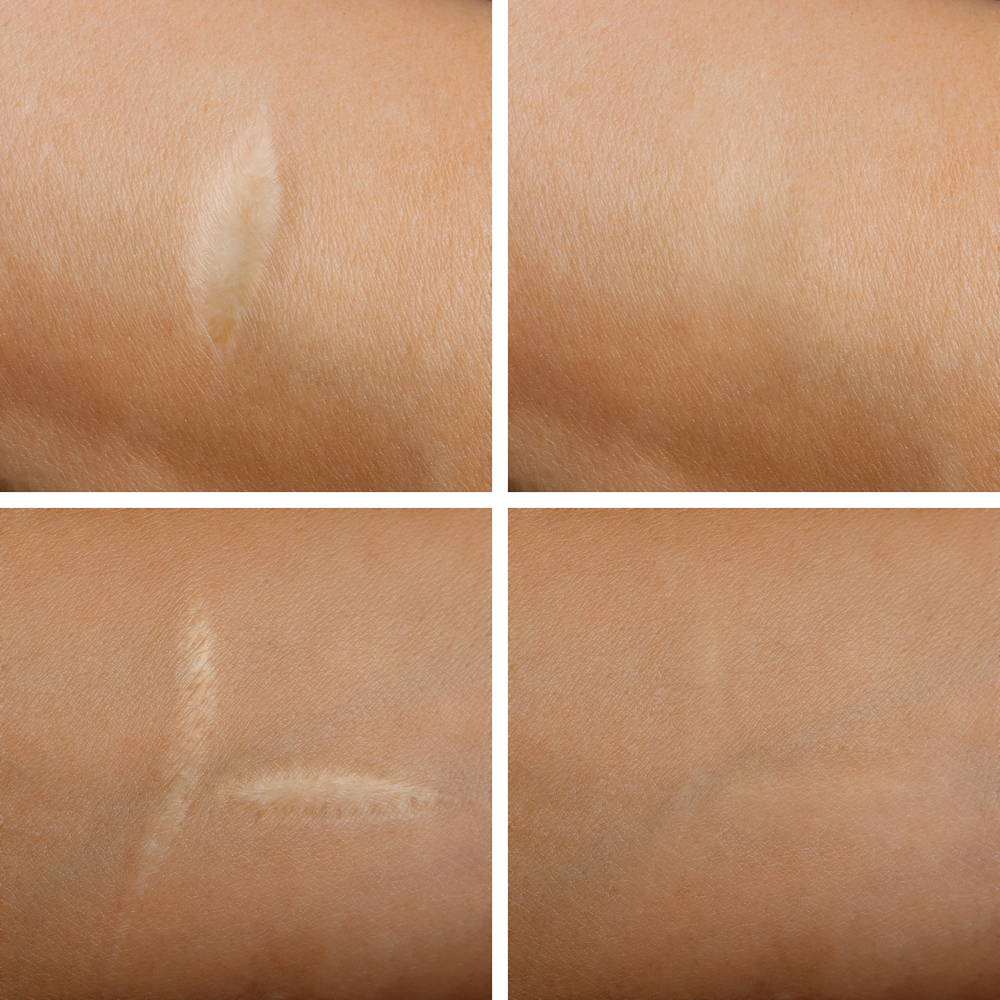You may already be familiar with the healing process that occurs after a wound – from the bike accident you had when you were young to the first time you sprained your ankle on the sports field. You may be wondering as you look down at the zigzag pattern on your knee and shin or feel that familiar tightness in your ankle that never seems to loosen up: “How to get rid of scar tissue?” At La Grange Chiropractic in La Grange, KY, we explore the latest technologies and options and may have the treatment that’s just right for you.
What Causes Scar Tissue?
Scar tissue is part of the body’s natural healing process and is comprised of the same collagen that is found in our skin. It feels and looks different from normal tissue because it is part of the body’s “rapid response team” that immediately starts the healing process when an injury occurs.
Slow Healing vs Rapid Healing
Because the body needs to jump-start the healing process, it doesn’t have time to make cells at the rate at which it normally does. When the body sustains a wound of some kind, whether it is from a fire, a twisted ankle, or a surgeon’s scalpel, special cells called fibroblasts work at top speed to close the wound or torn tissue quickly and safeguard the body against further injury or infection.
They smooth everything over, literally, in a one-directional pattern in order to protect the body’s tissues as quickly and efficiently as possible. This rapid protective healing process, which is not how the body typically builds tissue, shows up as scar tissue. The one-directional healing pattern is what makes scars look different from the skin around them.
The Four Types of Scars
There are four main types of scars: hypertrophic, keloid, contracture, and acne.
Hypertrophic Scar
- Red, raised above skin
- Does not spread beyond injury/surgery site
Keloid Scar
- Juts out from skin and spreads beyond injury/surgery site
- Caused by cell overproduction
- Over time, may affect mobility
- More common in individuals with darker skin types, especially those of Asian or African descent
Contracture Scar
- Typically occurs in skin that has been burned
- Causes tightening (contracting) in the skin that can reduce mobility
- Can go deeply, affecting muscles and nerves
Acne Scar
- Can be caused by any type of acne
- Can be shallow or deep
How to Get Rid of Scar Tissue?
Scar tissue on the skin may be addressed through cosmetic surgery techniques such as skin grafting or excision, which may be viable options if you have concerns about your skin’s appearance. Clients who are primarily concerned with the cosmetic appearance of scars, as opposed to the physical pain they cause, may find that such treatments are not typically covered for solely cosmetic reasons and are typically asked to pay out-of-pocket for such treatments.
Each type of scar responds to a different type of treatment. Hypertrophic scars may respond to steroid injections or even laser surgery. Some clients with keloid scars have seen results with cryotherapy (freezing the area with liquid nitrogen) and/or the above-mentioned treatments.
Other possible treatments include over-the-counter gels, ointments, or creams that can be topically applied. Prescription-strength options are also available. Your dermatologist may also recommend pressure dressings, or silicone gel sheeting, a reusable polymer which is left on the skin for up to three months and is used to soften and flatten scars. It is not meant for use on open wounds.
Deep Tissue Scarring
For deep tissue scarring that goes into the muscles and nerves and causes a lack of motion or pain and numbness, there are several options. It’s a good idea to check with your insurance company to see what they will cover. Insurance plans may cover the treatments if they are determined to be medically necessary, will alleviate or eliminate physical pain, and are not being performed purely for cosmetic reasons.
Soft Tissue Scarring Caused by Adhesions
Adhesions form around injured or surgically cut soft tissues that are not normally connected. Because these tissues would not typically be connected, the blood supply is compromised, causing the tissues to dry out. Repetitive stress or trauma to tissues can also cause adhesions.
However, scar tissue that forms in these areas can be manipulated to ease discomfort, and La Grange Chiropractic has a solution. With our patented Rapid Release Technology(TM), we can help to ease soft tissue pain and numbness by triggering a neurological response that calms the muscle spasms that individuals with scar tissue can experience.
What Can I Expect From My Rapid Release Technology(TM) Treatment?
Everyone will respond differently to the treatment, as each client’s scar tissue has healed differently. RRT works by using planar wave energy to break up adhesions in the treatment area and release muscles and nerves entrapped by scar tissue, with minimal discomfort.
Contact Us to Learn More
Many clients want to know how many sessions of RRT they may need. Here at La Grange Chiropractic, Dr. Lee Petrucci will evaluate your circumstances and work closely with you to determine your course of treatment and how many sessions you’ll need. Some clients start to experience relief after the very first session. Contact La Grange Chiropractic in La Grange, KY today to schedule your initial consultation.

